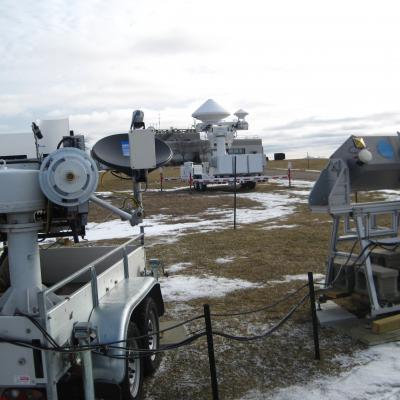Waiting for Snow
Gail Skofronick-Jackson at the SkyDive Airport

The antenna on the top of the trailer is a Micro Rain Radar (MRR). Note the large double fencing around additional instruments behind the trailer. The double fencing reduces errors due to blowing snow. Photo taken 7 February 2012.
Hot Plate Sensor at GCPEx

The sensor reacts by applying voltage to maintain the equal temperatures. The voltage is then converted to Watts (a measure of the power taken to evaporate the precipitation). This power is divided by the heat needed to evaporate one gram of water, thus providing the total grams of water falling on the hot plate. Photo taken 7 February 2012.
Pluvio Snow Sensor at GCPEx

Note the metal “double fencing” around the instrument. This reduces inaccuracies in the measurements due to blowing snow. Photo taken 7 February 2012.


